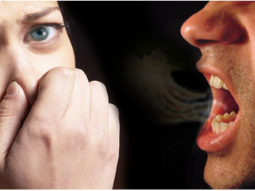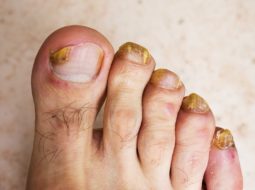Most Effective Remedy for Bad Breath
Bad breath, also known as halitosis, is a common oral health issue that can lead to social discomfort and embarrassment. This article aims to explore the most effective remedy for bad breath by examining its common causes and various treatment options.
By adopting an objective and impersonal approach, this article seeks to provide evidence-based information on foods, natural remedies, oral hygiene practices, and professional treatments that can effectively combat bad breath.
Understanding these remedies can assist individuals in improving their overall oral health and restoring confidence in their daily interactions.
Common Causes of Bad Breath
One of the key areas of research in understanding bad breath is identifying the common causes that contribute to its occurrence. Preventing halitosis is crucial for maintaining oral health and overall well-being. Understanding the impact of these common causes can help individuals take necessary measures to prevent and manage bad breath effectively.
Poor oral hygiene is a primary cause of bad breath. Inadequate brushing and flossing allow bacteria to accumulate on the teeth, gums, and tongue, leading to the production of volatile sulfur compounds (VSCs). These VSCs have a strong odor, resulting in foul-smelling breath.
Another common cause of bad breath is dry mouth or xerostomia. Saliva plays a vital role in rinsing away food particles and neutralizing acids produced by bacteria in the mouth. Reduced saliva flow allows bacteria to multiply rapidly, leading to an increase in VSC production.
Dietary choices also contribute significantly to halitosis. Consuming foods with strong odors such as garlic, onions, and certain spices can result in temporary bad breath. Additionally, crash diets or fasting can trigger ketosis – a metabolic state where the body burns fat for energy – which produces acetone-like compounds causing unpleasant breath odor.
Understanding these common causes of bad breath enables individuals to adopt preventive measures such as practicing good oral hygiene habits, staying hydrated throughout the day, avoiding foods with strong odors when social interactions are imminent, and maintaining a balanced diet. By addressing these factors proactively, individuals can reduce their risk of developing halitosis and enjoy fresh breath consistently.
Foods and Drinks That Can Help Freshen Breath
Consumption of certain foods and drinks has been shown to have a positive impact on maintaining fresh breath. Herbal remedies for fresh breath are often sought after as an alternative to conventional treatments. These remedies typically include the use of natural ingredients such as herbs, spices, and essential oils known for their antibacterial properties.
For instance, chewing on parsley or mint leaves can help mask odors and freshen breath due to their strong aromatic compounds. Additionally, green tea has been found to reduce oral bacteria and inhibit the production of volatile sulfur compounds (VSCs), which are major contributors to bad breath.
Home remedies for halitosis also play a significant role in improving oral hygiene. One effective method is oil pulling, where swishing oil in the mouth helps remove bacteria that cause bad breath. Another common home remedy is baking soda mixed with water, which acts as a natural mouthwash by neutralizing acidic conditions that promote bacterial growth.
While herbal remedies and home remedies may offer temporary relief from bad breath, it is important to note that they do not address underlying causes such as poor oral hygiene or medical conditions. Therefore, it is advisable to consult with a dental professional for proper diagnosis and treatment of chronic halitosis.
Natural Remedies for Bad Breath
Herbal remedies and home-based interventions have been explored as potential solutions to address the issue of halitosis. Among these, essential oils have gained attention for their antimicrobial properties that can help combat the bacteria causing bad breath. Certain herbal remedies, such as peppermint oil and tea tree oil, have shown promise in reducing bad breath due to their ability to inhibit the growth of oral bacteria. Peppermint oil contains menthol, which provides a refreshing sensation and helps mask unpleasant odors. Tea tree oil, on the other hand, has been found to possess strong antibacterial properties that can target the bacteria responsible for causing bad breath.
Research suggests that using essential oils as mouth rinses or adding them to toothpaste may be effective in reducing halitosis. A study conducted on individuals with chronic periodontitis found that a mouth rinse containing a combination of peppermint oil, tea tree oil, and thyme oil significantly reduced levels of volatile sulfur compounds (VSCs) – one of the main causes of bad breath.
While these findings are promising, more research is needed to determine optimal concentrations and application methods for essential oils in treating halitosis effectively. Additionally, it is important to consider potential side effects or allergic reactions before using herbal remedies or essential oils as part of oral care routines.
Oral Hygiene Practices to Combat Bad Breath
Oral hygiene practices play a crucial role in managing and preventing the occurrence of halitosis. One effective technique for maintaining oral hygiene is the use of tongue scraping. This technique involves gently scraping the surface of the tongue to remove bacteria, food particles, and dead cells that can contribute to bad breath. By regularly using a tongue scraper, individuals can reduce the accumulation of odor-causing substances on their tongues.
In addition to tongue scraping, essential oils have been found to be beneficial in promoting fresh breath. Essential oils such as peppermint, spearmint, and tea tree oil possess antimicrobial properties that can help combat oral bacteria responsible for halitosis. These oils can be used in various ways, including adding a few drops to water and using it as a mouthwash or incorporating them into homemade toothpaste.
It is important to note that while oral hygiene practices like tongue scraping and the use of essential oils can be helpful in managing bad breath, they should not replace regular brushing and flossing. Maintaining good overall oral hygiene by brushing twice daily with fluoride toothpaste, flossing once a day, and visiting the dentist regularly for check-ups are essential components of an effective oral care routine.

Professional Treatments for Chronic Bad Breath
Professional treatments offered by dental professionals are available for individuals experiencing chronic halitosis, providing specialized care that targets the underlying causes of persistent bad breath. In addition to oral hygiene practices, alternative therapies and medications can be used to treat chronic bad breath.
One alternative therapy for chronic bad breath is tongue scraping. This technique involves using a specialized tool to gently scrape the surface of the tongue, removing bacteria and food particles that contribute to foul-smelling breath.
Another option is oil pulling, which involves swishing a tablespoon of oil (such as coconut or sesame oil) in the mouth for up to 20 minutes before spitting it out. Proponents believe that this practice can help eliminate bacteria and reduce bad breath.
Medications may also be prescribed by dental professionals for treating chronic bad breath. Antibiotics may be prescribed if an underlying bacterial infection is identified as the cause of halitosis. These medications work by killing the harmful bacteria in the mouth that contribute to bad breath. Additionally, mouth rinses containing antimicrobial agents such as chlorhexidine or cetylpyridinium chloride can help reduce bacterial growth and minimize odorous compounds in the mouth.
Overall, professional treatments for chronic bad breath focus on addressing the root causes of halitosis through targeted interventions such as alternative therapies and medications. It is important for individuals experiencing persistent bad breath to consult with a dental professional who can provide personalized treatment options based on their specific needs.
Conclusion
In conclusion, bad breath is a common condition that can be caused by various factors such as poor oral hygiene, certain foods and drinks, and underlying health issues.
However, there are several effective remedies available to combat this problem. Natural remedies like chewing herbs or fruits can help freshen breath, while maintaining good oral hygiene practices like regular brushing and flossing are essential.
In severe cases of chronic bad breath, seeking professional dental treatments may be necessary to address the underlying cause effectively.
Additionally, maintaining good oral hygiene practices and visiting the dentist regularly can help prevent bleeding gums and promote overall gum health.
Previous Posts





